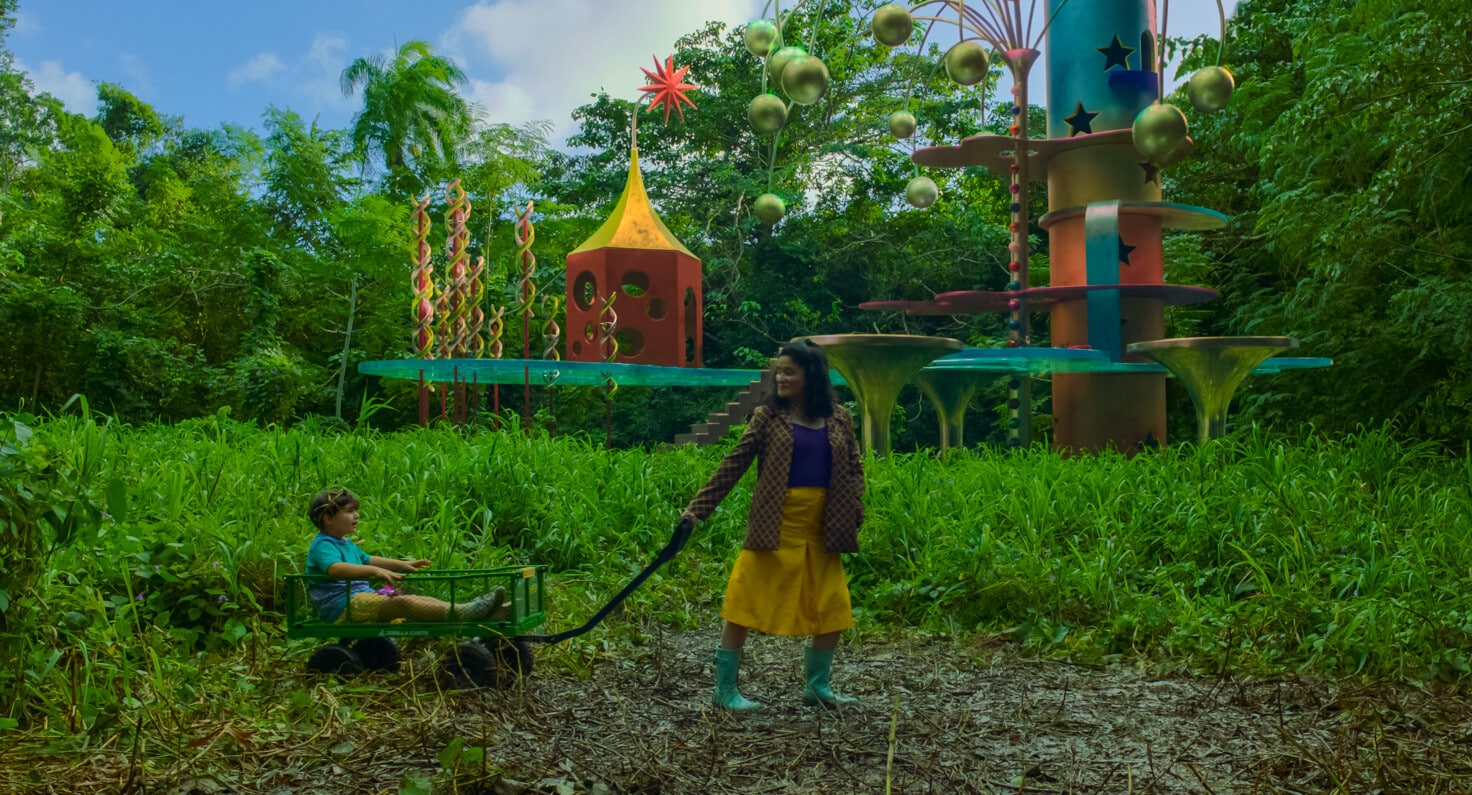In the early to mid-2000s, films depicting the immigrant experience in Western society were grounded in realism; the hardness of life as an immigrant was mirrored in the gritty drabness of the film’s visual palette. Mira Nair’s The Namesake (2006), an adaptation of Jhumpa Lahiri’s 2003 novel of the same name, feels emblematic of this visual style and time period. It centers on Nikhil (Kal Penn), a second-generation Bengali American caught between the two halves of his cultural identity, and his parents, Ashoke (Irrfan Khan) and Ashima (Tabu), as first-generation immigrants struggling with assimilation. Even in its most vibrant emotional moments, when the lighting is soft and the camera’s gaze warm and caressing, the film’s visual palette is dominated by the grayness of the sky—a symptom of its largely New England setting—and the relative cultural coldness of American society that is palpable to the outsider. In the two decades since the film’s release, viewers have been afforded only glimpses of immigrant stories that stray from this archetypal cultural and visual narrative. Films including Entre Nos (dir. Gloria La Morte, Paola Mendoza, 2009), A Better Life (dir. Chris Weitz, 2011), and, more recently, Minari (dir. Lee Isaac Chung, 2020) all depict visions of immigrant life defined by grit in an attempt to impress upon viewers the authenticity of the story being told.
The legal and social barriers these films depict make it difficult for characters to imagine life beyond their confines. The late anthropologist and anarchist David Graeber, in his 2015 book The Utopia of Rules: On Technology, Stupidity, and the Secret Joys of Bureaucracy, argues in favor of imaginative potential as a balm to the frustratingly tedious systems, processes, and forms that dictate human life. “Creativity and desire . . . are essentially vehicles of the imagination,” he writes, while “structural violence . . . tend[s] to skew the imagination.” Living inside these “lopsided structures of imagination” and the “shattering of imagination that results” are what we refer to as “alienation,” he argues. Graeber cites science fiction and fantasy literature as instances in which people have dared to dream of worlds free of bureaucracy. No subjective experience of alienation in society and the demands of bureaucracy placed upon the individual surpasses that of the immigrant. Two recent films, Problemista (dir. Julio Torres, 2023) and The Queen Of My Dreams (dir. Fawzia Mirza, 2024), feature Brown immigrant characters who dare to continue to dream in a society that encourages them to merely fall into line, who queer the worlds around them through visual motifs of dream sequences and surrealism.



